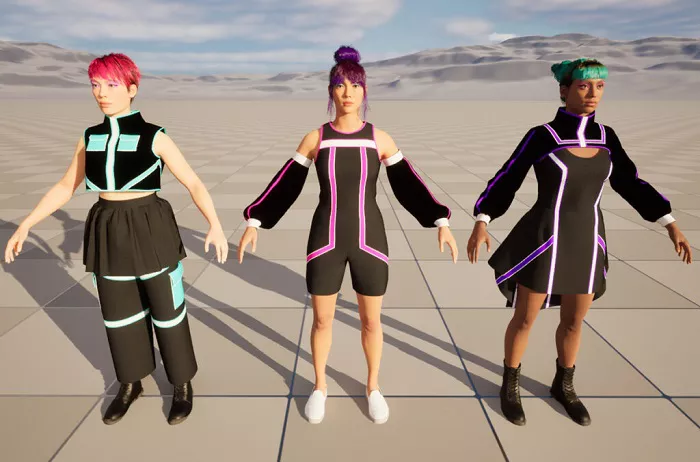Clothing is essential, whether for real people or video game characters. With the rise of digital worlds, why not make video game fashion just as stylish?
This was the core idea behind Colby Van Dyk’s master’s thesis project at Washington State University.
Van Dyk, from Enumclaw, Wash., defended her thesis in July. She combined her love for fashion with her passion for video games. “I wanted to blend these interests,” she said. “Fashion is something I enjoy, and video games are a big part of my life.”
Drawing from her experience in WSU’s Apparel, Merchandising, Design, and Textiles program, Van Dyk created virtual fashion designs. Her aim was to develop digital clothing specifically for video game characters.
To achieve this, Van Dyk used 3D design software VStitcher and CLO, which she mastered during her studies. She then imported her designs into Unreal Engine, a popular video game development tool. Additionally, she surveyed 50 regular gamers to understand their preferences for character fashion.
The feedback guided her to create three cyberpunk outfits. Though Van Dyk was unfamiliar with the cyberpunk genre, she embraced the challenge. “It was a fun challenge, and I’m pleased with the outcome,” she said. Her previous senior design collection featured princess-themed outfits, a stark contrast to the dark, edgy cyberpunk styles she developed for this project.
Van Dyk noted significant differences between designing physical clothing and digital fashion. “In Unreal Engine, details like zippers and buttons are unnecessary,” she explained. “You need to rethink these elements for virtual designs.”
Rather than designing for specific individuals, Van Dyk created characters that complemented her clothing. “I designed the characters to match the fashion I had created,” she said. “I visualized the character and made it a reality.”
Currently, Van Dyk’s designs are not featured in any games; they serve primarily as a proof of concept. Through her research, she discovered that most video game clothing is traditionally designed by game developers. However, she believes there is potential for fashion design companies to play a bigger role in this field.
“There’s room for more fashion designers to get involved in game character design,” Van Dyk said. “Surprisingly, I enjoyed this project more than my fashion show collection. It felt very personal and fulfilling.”
Related topics:
- Founders Of Rotate Celebrate Major Milestones In Copenhagen
- Haute Couture: Where Fashion Meets Athletic Precision
- Changing Office Attire: The Shift From Formal To Casual

